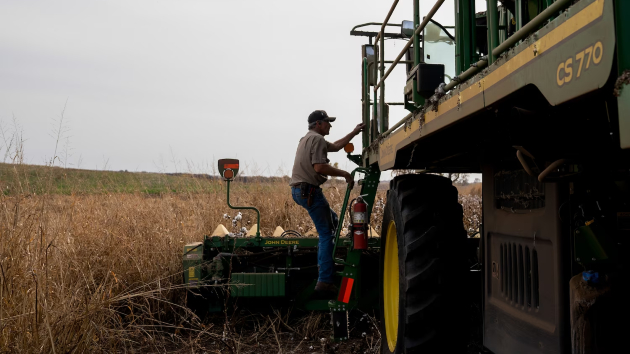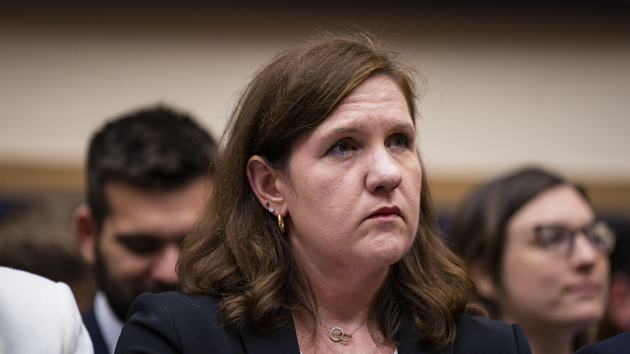Supreme Court says domestic abusers can be temporarily disarmed
Written by ABC Audio ALL RIGHTS RESERVED on June 22, 2024

(WASHINGTON) — The U.S. Supreme Court on Friday upheld a longstanding federal ban on firearms for people under domestic violence restraining orders.
The 8-1 opinion was authored by Chief Justice John Roberts. Justice Clarence Thomas was the lone dissenter.
“When a restraining order contains a finding that an individual poses a credible threat to the physical safety of an intimate partner, that individual may—consistent with the Second Amendment—be banned from possessing firearms while the order is in effect,” Roberts wrote. “Since the founding, our Nation’s firearm laws have included provisions preventing individuals who threaten physical harm to others from misusing firearms.”
The ban, Roberts concluded, “fits comfortably within this tradition.”
U.S. v. Rahimi centered on a dispute over a 1994 federal statute that requires domestic violence restraining orders (DVROs) issued by federal and state judges to be reported to the national background check system, and thus serve as a basis to deny a gun sale.
The law has blocked more than 77,000 attempted firearm purchases by people under DVROs since 1994, according to the FBI.
Challenging the law was Zackey Rahimi, a Texas drug dealer with a history of domestic violence, who argued the Second Amendment guarantees his right to possess a gun.
The case marked a major test for the court since its controversial 2022 decision New York State Rifle and Pistol Association v. Bruen that expanded individual gun rights and created a new framework for evaluating gun regulations saying only those with ties to the nation’s founding history and tradition can be constitutional.
The Bruen decision triggered a flood of challenges to gun safety laws on claims they don’t have a historical parallel and has become a source of confusion for judges who have struggled to apply the new rule consistently.
Roberts, seeming to acknowledge a course correction, wrote that “some courts have misunderstood the methodology of our recent Second Amendment cases. These precedents were not meant to suggest a law trapped in amber.”
Justice Amy Coney Barrett in a concurring opinion wrote that a “wider lens” on history is essential when interpreting gun laws: “Historical regulations reveal a principle, not a mold,” she wrote.
Thomas, who authored the Bruen opinion, wrote in his dissent that “not a single historical regulation justifies the statute at issue.”
“Yet, in the interest of ensuring the Government can regulate one subset of society, today’s decision puts at risk the Second Amendment rights of many more,” Thomas wrote.
The National Rifle Association, which had supported Rahimi’s challenge to the law, expressed disappointment in the ruling but emphasized its limited scope.
“The Supreme Court’s narrow opinion offers no endorsement of red flag laws or of the dozens of other unconstitutional laws that the NRA is challenging across the country that burden the right of peaceable Americans to keep and bear arms,” said NRA Institute for Legislative Action executive director Randy Kozuch in a statement on X. “This decision holds only that an individual who poses a clear threat of violence may be temporarily disarmed after a judicial finding of dangerousness.”
The court’s ruling on Friday comes at a time when firearms are a leading factor in intimate partner violence nationwide. So far this year, there have been 952 domestic violence murders involving guns, according to the Gun Violence Archive.
“They listened. They listened to survivors, they listened to us,” said La’Shea Cretian, a 45-year-old mother of two who was shot five times by her ex-boyfriend and survived, praising the Court’s decision. “Because there’s not a day, a minute, or a second that we don’t think about it and we don’t feel the pain… but we have to continue to go on in spite of it all.”
More than 12 million American adults are victims of domestic abuse every year; when a gun is involved, it’s 5 times more likely someone will die, according to Johns Hopkins University researchers.
“We know that firearms make domestic abuse situations significantly more deadly, and firearms’ effects on women’s safety is a crisis,” said former congresswoman Gabrielle Giffords, who founded a gun safety group after being shot in 2011. “This ruling is a small step in the fight to stop violence against women.”
“Our country has stood at a tipping point, with the safety of survivors of domestic violence on the line. But today, we took a step toward protecting millions from their abusers,” Janet Carter, the senior director of issues and appeals at Everytown Law, part of Everytown for Gun Safety, said in a statement.
Attorney General Merrick Garland said the Supreme Court reaffirmed the Justice Department’s view the federal firearm ban for domestic abusers is a “commonsense prohibition” consistent with the Second Amendment.
“The Justice Department will continue to enforce this important statute, which for nearly 30 years has helped to protect victims and survivors of domestic violence from their abusers,” Garland said.
Copyright © 2024, ABC Audio. All rights reserved.

 KVSP
KVSP 




